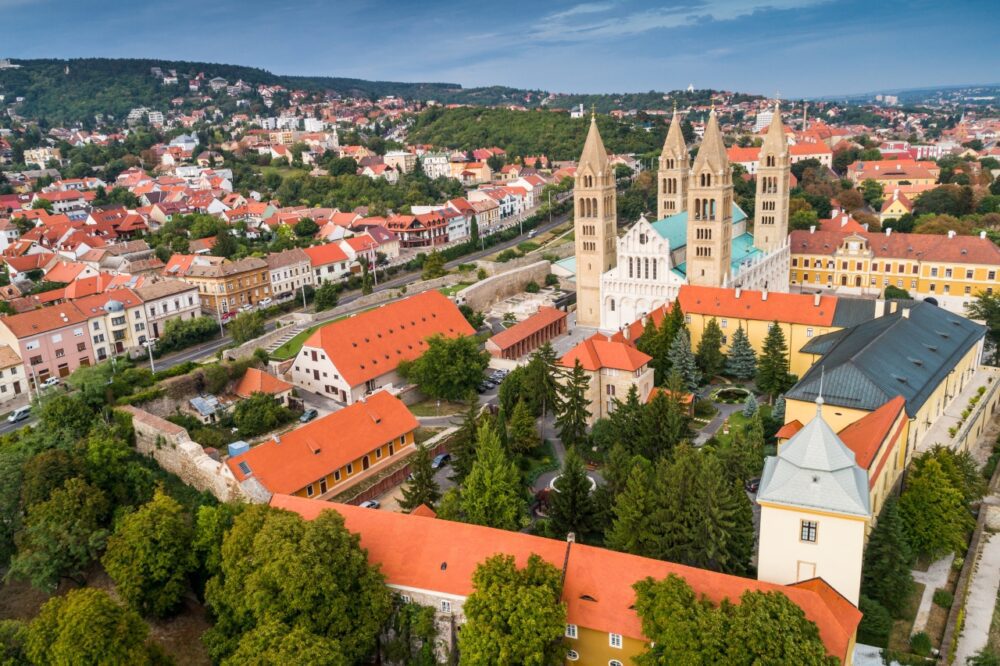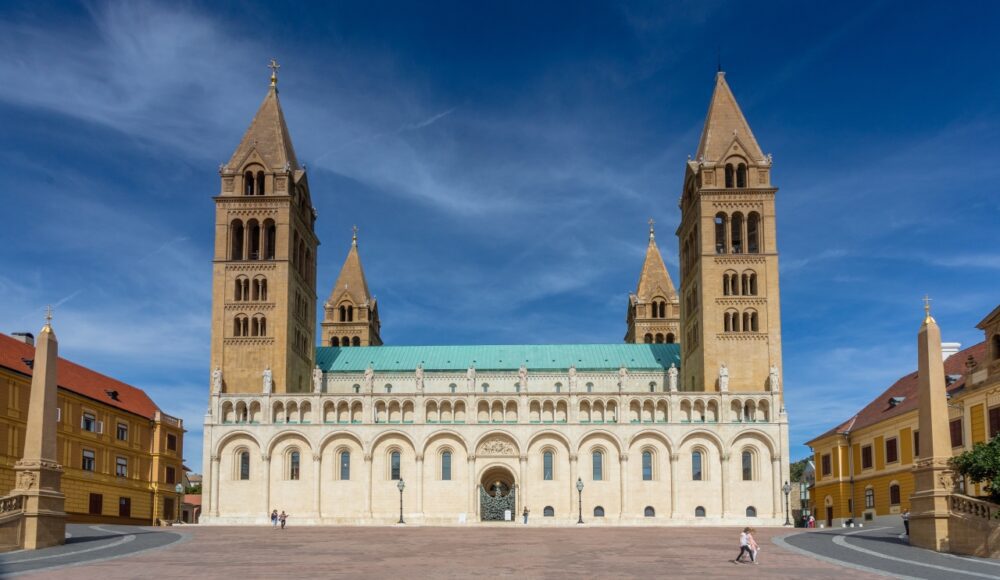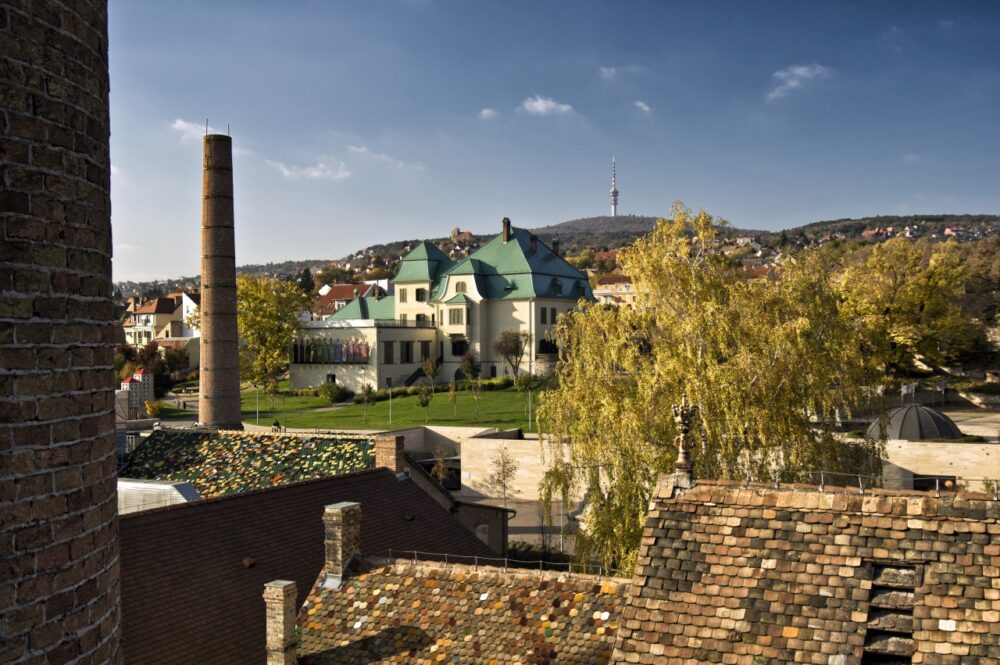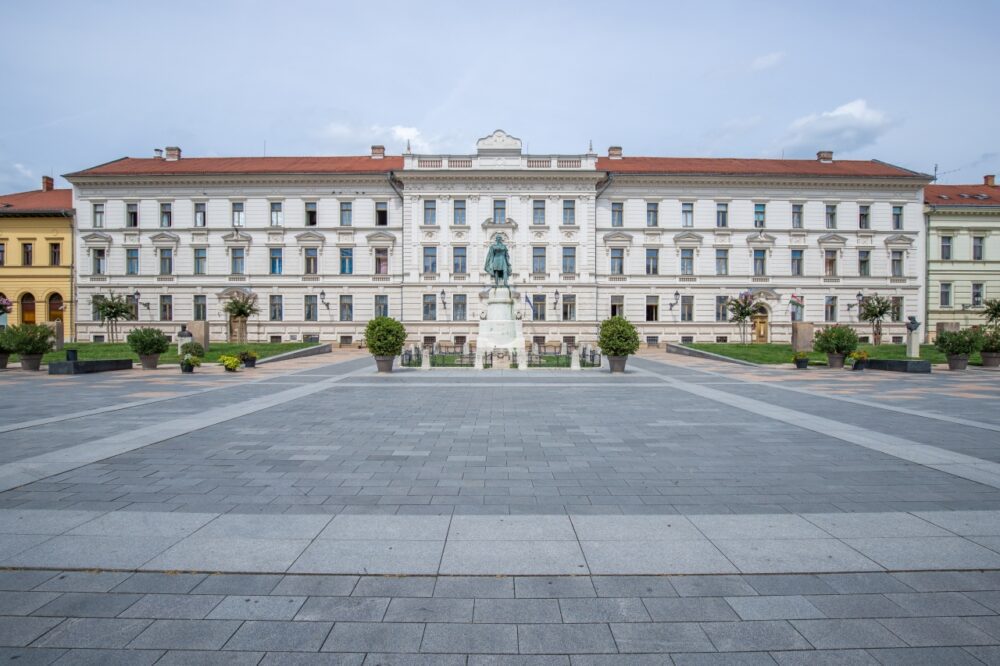
Is Pécs worth visiting? Absolutely! The first time I visited Pécs, I was struck by its unique blend of history, culture, and Mediterranean charm. Strolling through its cobblestone streets, past colourful buildings and ancient Roman ruins, I quickly realised why Pécs is considered one of Hungary’s most captivating cities. From its laid-back vibe to its vibrant arts scene, Pécs felt like a hidden gem just waiting to be explored.
Located in southern Hungary, Pécs is a city steeped in history and cultural significance. Known for its UNESCO-listed early Christian burial sites, stunning Ottoman-era mosques, and the iconic Pécs Cathedral, this city is a paradise for history buffs. But there’s more to Pécs than its past. It’s also home to a thriving arts scene, excellent wineries, and a warm, welcoming atmosphere. Whether you’re exploring Zsolnay Cultural Quarter, relaxing in one of its charming squares, or hiking the nearby Mecsek Hills, Pécs has something to offer every traveller. But is Pécs worth visiting for you?
In this blog post, we’ll uncover the top 10 reasons why Pécs should be on your travel list, from its rich history to its creative energy. Plus, we’ll share travel tips to help you make the most of your visit. Keep reading to discover why Pécs is one of Hungary’s most delightful destinations.
Table of Contents
Pros – Reasons You Should Visit Pécs
1. Rich Roman and Ottoman History

Pécs is a treasure trove of history, dating back to its time as a Roman settlement. The Early Christian Necropolis, a UNESCO World Heritage Site, showcases stunning burial chambers adorned with frescoes, while the Ottoman-era Mosque of Pasha Qasim reflects the city’s diverse cultural influences.
Walking through Pécs feels like stepping into a living history book. I was particularly struck by the Necropolis, with its beautifully preserved frescoes that tell stories of early Christianity. The Mosque, now a Catholic church, is equally fascinating, blending Islamic and Christian architectural elements in a way that feels uniquely Pécs.
2. Stunning Cathedral

The Pécs Cathedral, with its four iconic spires, dominates the city’s skyline and is a must-visit for its striking architecture and rich history. Inside, you’ll find ornate frescoes, intricate carvings, and a peaceful atmosphere that invites quiet reflection.
Climbing to the top of the cathedral rewarded me with sweeping views of the city and surrounding hills. Whether you’re an architecture enthusiast or just looking for a serene escape, the cathedral is a highlight of any visit to Pécs.
3. Vibrant Art Scene

Pécs has long been a hub for artists and creatives, and its thriving art scene is reflected in its many galleries, museums, and public art installations. The Zsolnay Cultural Quarter, dedicated to the city’s famous porcelain works, is a highlight, offering workshops, exhibitions, and beautifully restored buildings.
I spent hours exploring the Zsolnay Quarter, captivated by its vibrant ceramics and modern art exhibits. If you’re a fan of the arts, Pécs is a city that will keep you inspired at every turn.
4. Relaxed and Walkable City Centre

Pécs’s compact size and pedestrian-friendly streets make it easy to explore on foot. Széchenyi Square, the city’s main square, is the perfect starting point, with its fountains, cafes, and historic buildings creating a lively yet laid-back atmosphere.
I loved wandering through the narrow streets, discovering hidden courtyards and local shops. Pécs has a slower pace than larger cities, making it an ideal destination for those who enjoy a more relaxed travel experience.
5. Delicious Food and Wine
Hungarian cuisine shines in Pécs, with hearty dishes like goulash and chimney cakes available at local taverns and markets. The region is also known for its wines, particularly whites from the nearby Villány wine region.
I treated myself to a wine-tasting tour in Villány, where I sampled crisp whites and full-bodied reds while enjoying the stunning countryside views. Back in the city, local restaurants offered delicious, affordable meals that left me craving more.
6. Affordable Travel Destination
Like much of Hungary, Pécs is a budget-friendly destination where you can enjoy high-quality dining, accommodation, and activities without breaking the bank.
I stayed in a charming guesthouse near the city centre for a fraction of what it would cost in Budapest. Meals, museum tickets, and even wine tours were surprisingly affordable, making Pécs an excellent choice for budget-conscious travellers.
7. Proximity to Nature
Pécs’s location in the foothills of the Mecsek Mountains makes it an excellent base for outdoor activities like hiking, cycling, and picnicking. Tettye Park, located just a short walk from the city, offers scenic trails and beautiful views.
I spent a morning hiking in the Mecsek Hills, enjoying the fresh air and tranquil surroundings. Whether you’re a nature enthusiast or just looking for a break from sightseeing, the green spaces around Pécs are a perfect retreat.
8. Unique Museums
Pécs is home to several unique museums that cater to a variety of interests. The Csontváry Museum, dedicated to one of Hungary’s most famous painters, and the Vasarely Museum, showcasing op art, are particular standouts.
The Csontváry Museum was a personal favourite, with its bold colours and surreal landscapes that felt both timeless and modern. If you enjoy museums that offer something a bit different, Pécs has plenty to explore.
9. Warm and Welcoming Locals
Pécs’s residents are known for their friendliness and hospitality, making visitors feel right at home. From shopkeepers to tour guides, locals often go out of their way to share recommendations and insights about their city.
I had several conversations with locals who offered tips on where to eat and what to see. Their warmth and enthusiasm added a personal touch to my visit, making Pécs feel like more than just another stop on my itinerary.
10. Festivals and Events
Pécs hosts a variety of cultural events throughout the year, from music and dance festivals to wine and food fairs. The Pécs International Dance Festival and the Zsolnay Light Festival are particularly popular, drawing visitors from across Hungary and beyond.
I attended the Light Festival, and it was magical watching the city’s historic buildings illuminated with colourful projections. If you can time your visit to coincide with a festival, it’s a fantastic way to experience Pécs at its liveliest.
Cons – Things to Consider When Visiting Pécs
1. Limited Major Attractions
While Pécs is rich in history and culture, its list of major attractions is relatively short. If you’re someone who prefers a packed itinerary, you might find that a couple of days is enough to see everything the city has to offer.
After two full days in Pécs, I felt like I had explored most of the main sights. However, if you enjoy slow travel and taking your time to savour a destination, Pécs’s relaxed pace might be a positive rather than a drawback.
2. Public Transport Challenges
While the city is easy to navigate on foot, public transport options for exploring nearby attractions or venturing into the countryside are somewhat limited. Buses and trains are available but may not run as frequently as in larger cities.
I rented a bike to explore the Mecsek Hills, which was a great way to get around. If you plan to visit the Villány wine region or other nearby destinations, renting a car or joining a tour might be more convenient.
3. Language Barrier
While English is widely spoken in tourist areas, it’s less common in smaller shops, markets, and neighbourhoods. Hungarian is a challenging language for non-speakers, so communication can sometimes be tricky.
I found that learning a few basic Hungarian phrases, like “hello” (szia) and “thank you” (köszönöm), made a big difference. Locals were generally patient and helpful, but having a translation app on hand was also useful.
4. Seasonal Weather Extremes
Pécs experiences hot summers and cold winters, which may not suit all travellers. Spring and autumn are the best times to visit for mild weather and pleasant outdoor conditions.
I visited in late summer, and while the sunshine was lovely, the heat during the afternoon made sightseeing a bit uncomfortable. If you’re planning outdoor activities, consider the season and pack accordingly.
5. Smaller Nightlife Scene
Pécs’s nightlife is more low-key compared to larger cities like Budapest. While there are bars and pubs, the options are fewer, and the atmosphere is generally more relaxed.
I enjoyed a quiet evening at a wine bar, sampling local Villány wines, but it’s not a destination for those seeking a bustling club scene. If nightlife is a priority, you might want to combine your visit to Pécs with time in Budapest.
When to Visit Pécs
The best times to visit Pécs are spring (April to June) and autumn (September to October). These seasons bring mild temperatures and are ideal for exploring the city’s UNESCO-listed early Christian burial sites, leafy parks, and atmospheric streets. Summer (July to August) is lively, with festivals such as the Zsolnay Light Festival, but it can be warm and busier. Winters in Pécs are quieter and cool, offering a relaxed vibe and cosy cafes, perfect for enjoying the city’s artistic atmosphere and museums.
How to Get to Pécs
The nearest airport to Pécs is Budapest Ferenc Liszt International Airport (BUD), located about 200 kilometres away. From Budapest, direct trains operated by MÁV connect to Pécs in about 3 hours, offering a scenic and comfortable journey. Long-distance buses are also available but are generally slower than trains. For drivers, the M6 motorway links Budapest to Pécs, making the trip convenient by car. Once in Pécs, the city’s compact size and public transport options make getting around easy.
Where to Stay in Pécs
Pécs offers a range of accommodation options, from boutique stays to budget-friendly choices:
- Luxury: City Centre – Stay close to landmarks like Széchenyi Square and the Mosque of Pasha Qasim. Options include Corso Hotel Pécs and Hotel Palatinus City Center, both combining elegance with central locations.
- Mid-range: University Quarter – Ideal for a relaxed atmosphere with great local cafes. Consider Boutique Hotel Sopianae or Adele Boutique Hotel, offering stylish and comfortable stays.
- Budget: Zsolnay Cultural Quarter – Perfect for travellers seeking a creative vibe. Affordable options like Toldi Apartments or guesthouses nearby provide budget-friendly accommodation with character.
Getting Around Pécs
Pécs is a walkable city, with most major attractions like Széchenyi Square, the Zsolnay Cultural Quarter, and the Pécs Cathedral within easy reach on foot. For longer distances, the city’s public transport network includes buses, which are affordable and reliable, with single tickets and day passes available. Renting a bike is a great option, especially for exploring the surrounding hills and vineyards. While Pécs doesn’t have a formal bike-sharing scheme, local rental shops are easy to find. Taxis and rideshare apps are also available but best used for trips outside the city centre.
How Long to Spend in Pécs
Two to three days is ideal for exploring Pécs’ highlights, including its UNESCO-listed Necropolis, the Zsolnay Cultural Quarter, and the vibrant Széchenyi Square. This allows time to visit the city’s museums, such as the Csontváry Museum, and sample local wines in nearby Villány. With an extra day, consider venturing into the Mecsek Hills for hiking or visiting the stunning Harkány Thermal Baths. Pécs’ blend of history, art, and natural beauty makes it a rewarding destination for a short but enriching trip.
Conclusion
So, is Pécs worth visiting? Absolutely! With its rich history, stunning architecture, and vibrant cultural scene, Pécs offers an experience that’s both inspiring and relaxing. Highlights like the UNESCO-listed burial sites, Zsolnay Cultural Quarter, and the peaceful Mecsek Hills make it a must-visit. While it’s quieter than Budapest or other larger cities, its charm and cultural depth more than make up for it. If you’re ready to explore one of Hungary’s most beautiful cities, start planning your trip to Pécs today—you won’t regret it!
